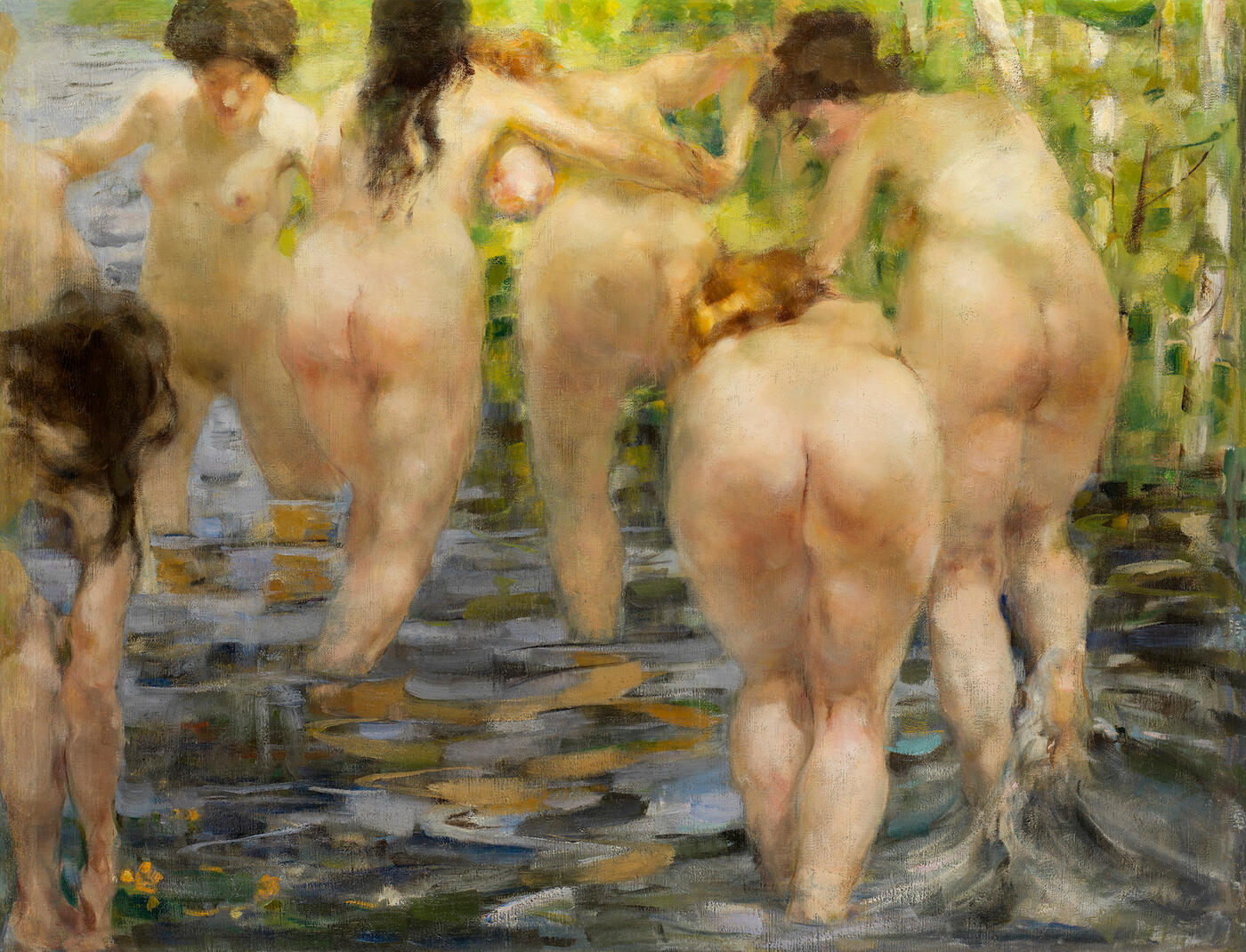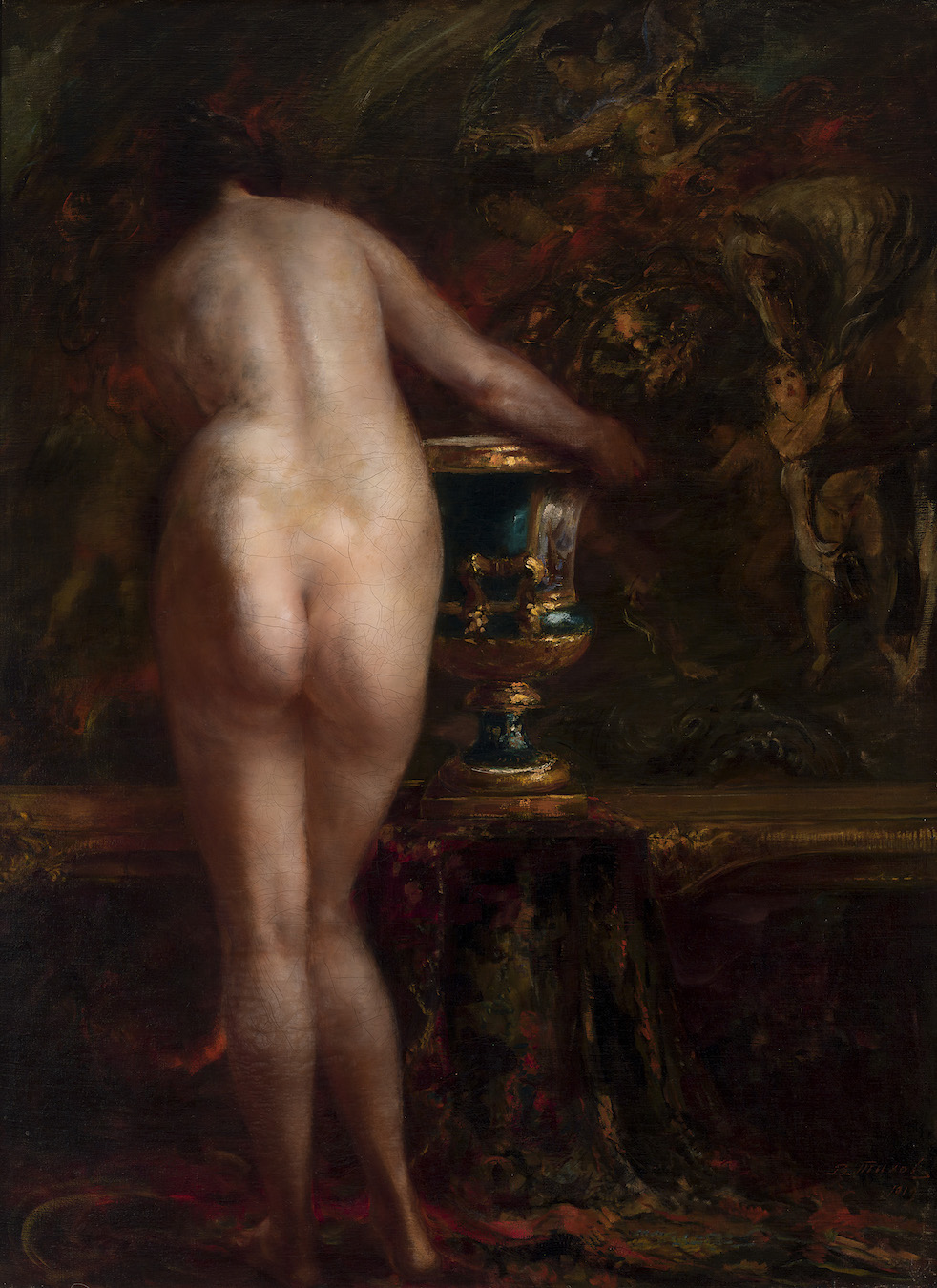2 December 2015 Russian Art Auctions
2 December 2015

* 111. TIKHOV, VITALY (1876-1939)
Bathers and Nude with a Vase by the Rubens Painting "Perseus and Andromeda", double-sided work, one side signed and dated 1919.
Each side oil on canvas, measuring 151 by 198 cm (Bathers) and 198 by 151 cm (Nude with a Vase).
120,000-150,000 GBP
Provenance: Private collection, Europe.
Vasily Tikhov is primarily known to the general public because of his works from the 1920s, depicting events associated with the building of the Soviet way of life. Curiously, while churning out monumental paintings documenting the activities of the first kolkhozes and promoting the swift industrialisation of the country, Tikhov was enthusiastically painting nudes. His many works in that genre, all variants of such topics as Bathers, or In the Bathhouse, form a whole cycle, an artistic suite of sorts, celebrating the beauty and allure of the female body.
Initially, these works were kept exclusively in private collections, and it took them many years to make it into the collections of state museums. The painting offered here is in many ways unique. It was painted on both sides of the canvas, and it represents two distinct subjects that preoccupied the artist at that time: a finely balanced composition of nude figures and a picture of a young girl in front of a well-known painting by Peter Paul Rubens, one of maîtres of European art of the 17th century.
It is impossible now to establish the reason as to why the artist resorted to such an arrangement. We may only guess that it was the scarcity of material resources at the end of the 1910s – beginning of the 1920s that prompted him to paint on both sides of the canvas. This renders the work even more valuable in that it embodies the master’s artistic proclivities and goals, externalised by him in the sacred, serene surroundings of his studio.
The genre of nudes initially attracted Tikhov when he was a student at the Imperial Academy of Arts in 1903–1912. An outstanding pupil of Vladimir Makovsky, Tikhov received the rank of a certified artist and an entitlement to a funded research trip abroad for his painting Bathers. His impressions of the vast Old Masters collection at the Hermitage, enriched by his studies of Europe’s best collections, formed his artistic preferences. Moreover, the young artist creatively reinterpreted the styles of the 16th and 17th century paintings he saw to suit his own vision. In the manner of execution, and especially owing to the subdued palette, with only occasional bursts of colour, the girl painted in front of Rubens’s Perseus and Andromeda appears to echo the work of the Flemish master. Tikhov modified this subject in some of his pictures, which also feature works of the Old Masters.
Bathers, however, is strikingly different. Here, Tikhov’s artistic aim is to express in painterly form the innate consonance between a naked body and nature, the harmony of their co-existence. The artist uses the language of Impressionism to communicate to the viewer the beauty and plasticity of human form, portraying his models as they move and turn their bodies. With an exceptional feel for colour, Tikhov envelops the riverbank and the foliage of the shrubs emerging in the background in a delicate, shimmering sunlight. The result is a work imbued with a distinctive mood and permeated by a joy that enchant the viewer by their sincerity and immediacy.

Notes on symbols:
* Indicates 5% Import Duty Charge applies.
Ω Indicates 20% Import Duty Charge applies.
§ Indicates Artist's Resale Right applies.
† Indicates Standard VAT scheme applies, and the rate of 20% VAT will be charged on both hammer price and premium.